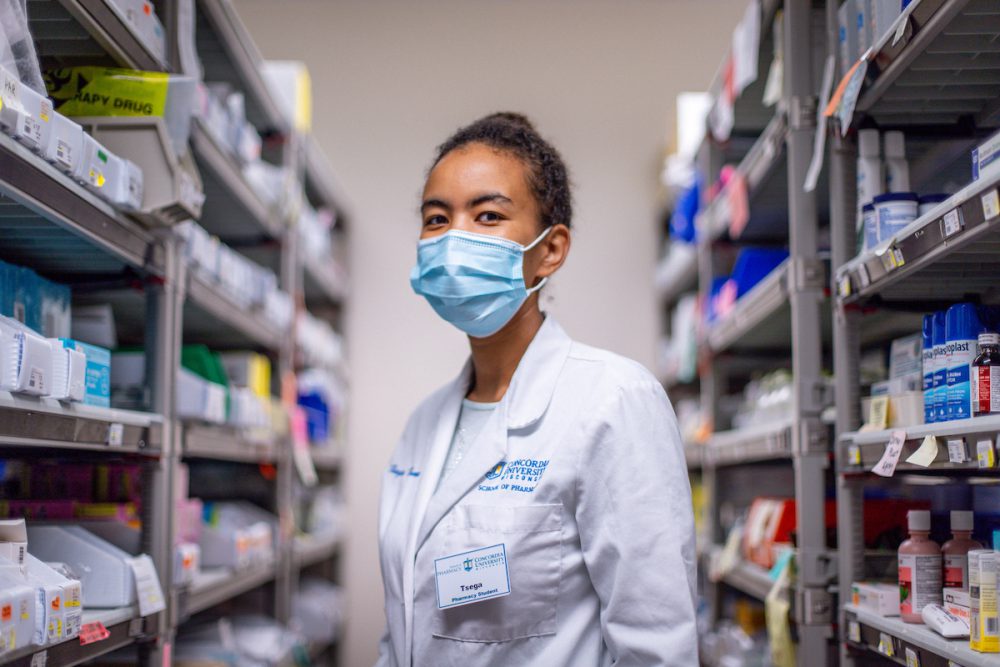
At Concordia University Wisconsin School of Pharmacy (CUWSOP), we are “committed to developing pharmacists who are servant leaders, dedicated to providing value-based, patient-centered care that improves the health of our communities.” This mission is significantly aligned with the practice of public health,” which “promotes and protects the health of people and the communities where they live, learn, work and play.”
Audrey Kostrzewa, one of CUWSOP’s faculty members, is passionate about public health and enjoys sharing her love for it with students. She earned her Master of Public Health (MPH) degree and her Doctor of Pharmacy (PharmD) degree at the University of Iowa. She initiated a PharmD/MPH dual degree program in 2017 through a collaboration with Concordia University Nebraska (CUNE) at Seward, aiming to provide the same opportunity to her students at CUWSOP.
Most recently, she has helped launch Concordia’s Bachelor of Science in Public Health (BSPH) degree to introduce students to public health earlier in their careers. The BSPH offers an excellent foundation for students going into various disciplines.
In practice, Dr. Kostrzewa works on the Center for Medication Utilization (CMU) team at Froedtert & The Medical College of Wisconsin, a large academic medical center in the Milwaukee area. As a Medication Utilization Pharmacist, Dr. Kostrzewa works with a team of pharmacists to optimize how medications are used in the entire health system (i.e., no direct patient care).
This includes managing the formulary (e.g., keeping up with any new or changing medications), addressing any medication safety issues that may come up, etc. This population-based approach to medications allows her to use much of the knowledge and skills gained through her public health work.
Becoming a public health advocate
Dr. Kostrzewa teaches a second-year required course called Servant Leadership and Public Health in the PharmD curriculum. Students learn about servant leadership, advocacy, and public health in various ways. One of the ways students apply the material is by using a public health approach to complete an assignment where they:
- Identify a population and a public health issue that affects the population.
- Find evidence about the issue and possible interventions to address the problem.
- Choose an intervention with rationale, then implement it.
- Evaluate the impact and reflect.
Students are creative, have fun, and, most importantly, positively impact their community. This year, in Spring 2023, several noteworthy projects served special, sometimes underserved populations – children and older adults. A brief description of each project is outlined below.
Young (children)
The following three groups of students illustrate how you can target different public health issues within similar populations.
- Healthy eating for preschool families. This group of students wanted to address nutrition issues in young children. They made a kid-friendly cookbook for kids to be involved with making meals and shared it with preschool families.
- Bedding drives for Sleep in Heavenly Peace. This group of students wanted to address sleep issues in children. They did this by helping a global non-profit organization that makes beds for children who don’t have them. These students volunteered by physically making beds and setting up a collection drive in multiple locations for bedding supplies.
- Burnout of pediatric patients in the hospital. This group of students wanted to address the emotional and physical burnout of hospitalized pediatric patients and their families. They made and delivered 50 coloring books to the Children’s Hospital of Wisconsin.
Old (older adults)
The following three groups of students illustrate how you can offer different interventions to address the same public health issue. In this case, these students wanted to address mental health issues, such as isolation and loneliness, in nursing homes or assisted living residents.
- The mental health of nursing home residents. This group of students decided to make baked goods. And then provide personal visits to many residents at a local nursing home.
- Easter cards and eggs for nursing home residents. This group of students decided to make homemade cards. Then, fill Easter eggs with treats and personally deliver them to residents.
- Elderly residents and mental health. This group of students decided to organize and run a game/puzzle drive for an assisted living facility. Therefore, providing new or updated enrichment activities for the residents.
Dr. Kostrzewa is very proud of all her students. She truly enjoys seeing how they make a meaningful difference in their communities. These projects are just one example of how CUWSOP carries out its mission to develop servant leaders and how servant leaders can impact public health.